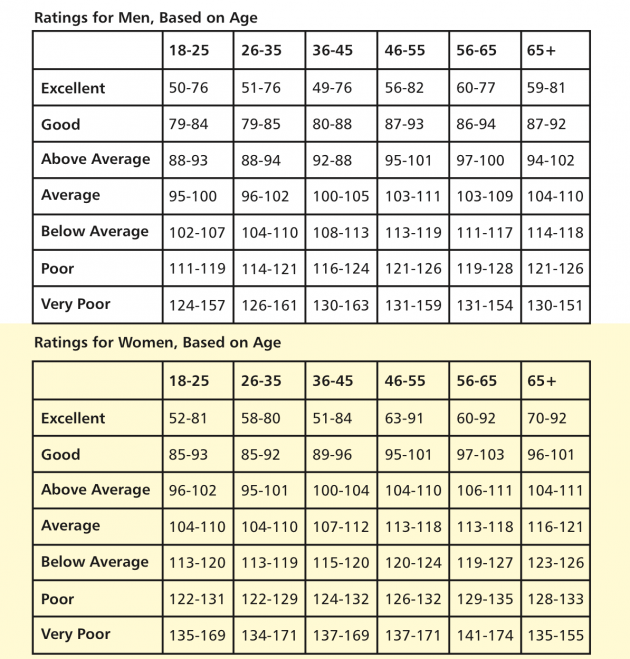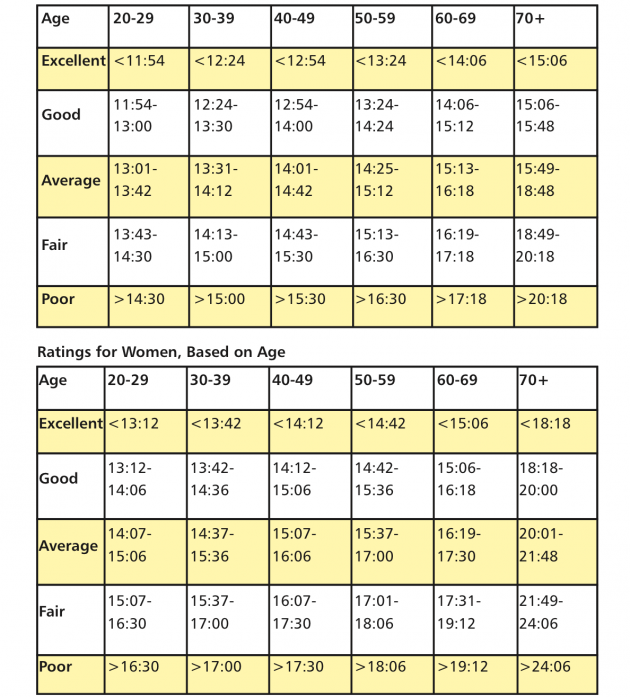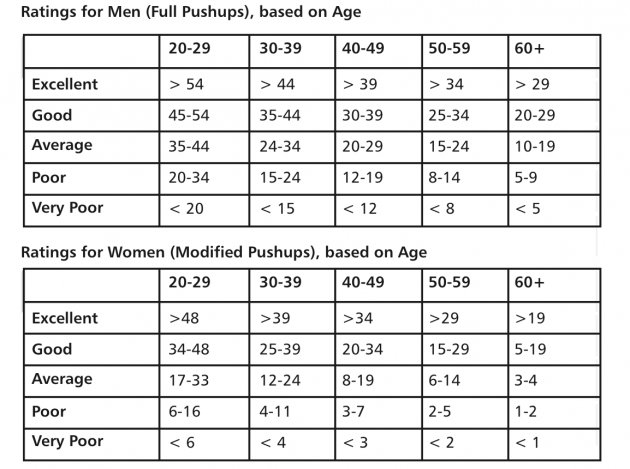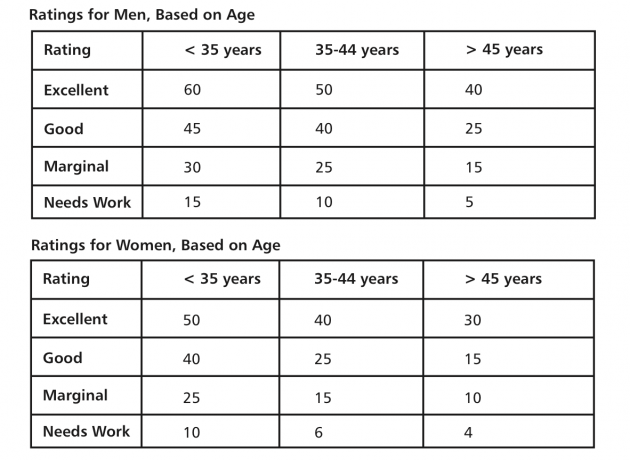Four fitness tests you can do at home
Yours sincerely has tons of reasons to exercise, both for health and well-being and to be an example to my kids. What about you? Why do you exercise? No matter, whether you want to increase your energy, reduce your health risks, or lose some unwanted pounds, do you ever wonder if all that working out is working for you?
Are you getting any fitter, losing or maintaining weight etc., because most often when we embark on exercises, our expectations especially for weight loss purposes, are a tad unrealistic? We often forget that it took some while to park on the pounds, nonetheless, we want to lose them pronto, and thus when we feel that the expected results are not forthcoming, we become demotivated. But should we really be?
That’s where fitness assessments come in, to show you how well your journey is progressing or not, but whatever be the case the results can be great motivational tools if the commitment and will is present.
The good news is that if you don’t have access to all the toys and tools of a gym, don’t panic. You have everything you need to measure your fitness level in your own house!
So, start with the simple assessments below, in conjunction with consulting your doctor, espeacially if you plan to start an exercise program tomorrow or you’ve been at it for a while.
The 3 Minute Step Test – measures aerobic fitness
The I -Mile Walk Test – measures aerobic fitness
The Push-Up Test – measure muscular strength and endurance
The Crunch Test – measures abdominal strength and endurance
Remember, these tests are great tools to measure your ability to exercise on different levels and you can track your score and keep records. These will come in handy in future when you redo the test. Do you have an app that you use for tracking your exercise goals; you can also store your scores on those.
If you don’t score as well as you like, just remember to focus on improving your own scores periodically. As long as you are improving, your fitness plan is working. If you find you aren’t making the progress that you feel you should be seeing, it may be time to change your workout routine, tweak your lifestyle changes some more or touch up your well being plans.
The 3-Minute Step Test
The 3-Minute Step Test measures your aerobic (cardiovascular) fitness level based on how quickly your heart rate returns to normal after exercise.
Equipment needed: Stopwatch or clock with a second hand; a friend to help you keep count; a 12-inch bench, box, or step; a metronome (if you don’t have one, use the free online version at www.MetronomeOnline.com)
Goal: Step on and off the bench for 3 minutes straight while keeping a consistent pace and then see how quickly your heart rate will come back down.
Execution: This test is based on a 12- inch step, so use one as close to 12 inches as possible. Set the metronome to 96 beats per minute and make sure you can hear the beat. Stand facing the step. When ready to begin, start the clock or stopwatch and march up and down on the step to the metronome beat (up, up, down, down) for 3 consecutive minutes. (You can rest if you
need to, but remain standing.) When 3 minutes are up, stop immediately, sit down on the step, and count (or have a friend count) your pulse (use your wrist or neck) for one full minute.
What this measures: This test assesses your fitness level based on how quickly your heart rate recovers after exercise. The fitter you are, the quicker your heart rate will return to normal after exercise.
Scoring: Here are the age-adjusted standards based on published guidelines.
How to improve: Develop a regular cardio (aerobic) exercise routine and stick to it. Increase your intensity and duration gradually and you’ll boost your endurance over time.
The 1-Mile Walking Test
This 1-Mile Walking Test measures your aerobic (cardiovascular) fitness level based on how quickly you are able to walk a mile at a moderate level of exercise intensity.
Equipment Needed: Comfortable clothing and sturdy walking or running shoes; a stopwatch or a clock with a second hand; a flat one-mile walking surface, such as a standard quarter-mile track (four laps equals one mile) or a flat road where you’ve measured the one- mile distance with your car’s odometer.
Goal: Walk one mile as quickly as possible.
Execution:
Caution-
• Do not attempt this test until you are routinely walking for 15 to 20 minutes several times per week.
• Do not perform this test on a treadmill, as your results will be skewed. Warm up by walking slowly for 3-5 minutes. When you are ready to begin, start the clock and begin walking as fast as you can while maintaining a steady pace. You can slow down and speed up as you wish, but the goal is to complete the mile as quickly as possible. Stop your watch or check your time at the end of the mile to the nearest second. When finished, keep walking for a few minutes to cool down. Follow up with a few stretches.
Scoring: Here are the age-adjusted standards (listed in minutes and seconds) for men and women, which are based on information collected from different sources.
How to improve: Develop a regular cardio (aerobic) exercise routine, or on the alternative develop a good working routine that will suffice as exercise (not a leisurely stroll, no matter how long) and stick to it. Increase your intensity and duration gradually. If your exercise of choice is walking, think about
incorporating a little bit of higher intensity intervals, such as hills or light jogging.
This will build a good aerobic base and your heart will become more efficient which means that it will be able to do the same amount of work without working as hard and you ‘ll boost your endurance over time.
How to know its working: Over time, you should be able to walk faster without getting as tired. Retest yourself at least twice a year.
The Push-up Test
The Pushup Test measures muscular strength and endurance, a combination that reflects your fitness level. A timed pushup test does not require anything, as it literally can be done anywhere.
Equipment needed: A stop watch or timer that can measure one full minute; a friend to help keep count and time you (optional).
Goal: Do as many pushups as you can in one minute.
Execution: Men will assume a traditional pushup position and females can use the modified pushup position (on knees). When the pushups start, so does the clock! Press yourself up with arms fully extended and lower yourself back until your chest is three inches from the floor (but do not touch your body to the floor). Repeat as many times as you can in one minute. You may rest only in the “up” position if necessary.
What this measures: Strength and endurance in your chest, shoulders, and triceps.
Scoring: Here are the age-adjusted standards based on guidelines published by the American College of Sports Medicine (ACSM):
How to improve: To improve your scores in this test, focus on strength training the specific muscles of the chest, shoulders, and triceps.
How to know its working: When you’re done testing, you can track your results to keep track of your progress! Over time, you should be able to do more pushups in subsequent assessments. Try to retest yourself every 4-8 weeks.
The Crunch Test
The Crunch Test, technically referred to as the “partial curl-up” test, measures abdominal strength and endurance, a combination that more truly reflects your fitness level than strength tests alone. This test is a better choice over the standard sit-ups because crunches are safer for the lower back and target the abs better. A timed crunch test can also be done anywhere.
Equipment needed: A stop watch or timer that can measure one full minute; a ruler; a friend to help keep count and time you (optional).
Goal: Do as many crunches as you can in one minute.
Execution: Although this test involves regular crunches, it has some specific guidelines. Lie down on your back with your knees bent, feet flat on the floor and your heels about 18 inches away from your behind. Place your arms at your sides, palms down, fingertips next to your hips. Place a ruler next to your fingertips in this position and measure 6 inches further. You can put a piece of paper, the ruler itself, or a piece of tape at that 6-inch marker.
Keep your hands on the floor throughout the test. Just like abdominal crunches, engage the abs to lift your head, neck, and shoulder blades off the floor, but allow your fingertips to slide toward the 6-inch marker. Return to the starting position to complete one rep. Repeat this as many times as you can in 60 seconds, counting only the number of repetitions that your fingertips successfully reach the 6-inch marker. You may rest in the starting position (relaxed), but the clock continues to run.
What this measures: Strength and endurance in your abdominals.
Scoring: Here are the age-adjusted standards based on guidelines published by the American College of Sports Medicine (ACSM) .
How to improve: To improve your scores on this test, choose strength exercises that focus on the core muscles of the abdominals and lower back. There are lots of variations of crunches that can help build strength and endurance in the abs.
How to know its working: Over time, you should be able to do more crunches in subsequent assessments. Try to re- test yourself every 2-4 weeks.
These tests are great tools to see how you are doing. If you don’t score as well as you like, just remember to focus on improving your own scores periodically. As long as you are improving, your fitness plan is working. If you find you aren’t making the progress that you feel you should be seeing, it may be time to change your workout routine.
Maybe you’ll find that you’re doing really well, charging along like a bull, well the world’s your oyster. But even if you weren’t able to register on the chart, that’s OK. Everyone starts somewhere! Just try to improve gradually over time from where you started. Remember, you are looking for improvement in yourself, regardless of what a chart says or how well someone else does.
Everything’s all up for grabs, what’s not available, is giving up.




